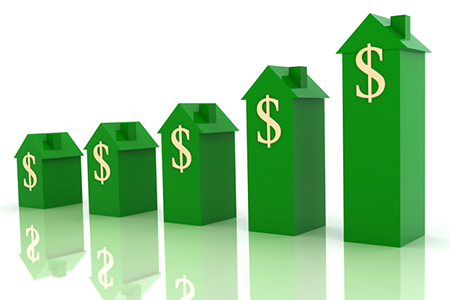Home prices lingered at the all-time high in the latest S&P CoreLogic Case-Shiller Indices, up 5.6 percent year-over-year in May, a gain identical to April.
The S&P CoreLogic Case-Shiller U.S. National Home Price NSA Index’s 10-City Composite rose 4.9 percent year-over-year, down from 5.0 percent in April, while its 20-City Composite rose 5.7 percent, down from 5.8 percent in April. Month-over-month, the 10-City Composite rose 0.7 percent and the 20-City Composite rose 0.8 percent.
Home prices are on a one-way upward track, but at a staggered pace from market to market, according to S&P Dow Jones Indices Committee Chairman and Managing Director David M. Blitzer—an important differentiation from the boom of the early 2000s.
“Home prices continue to climb and outpace both inflation and wages,” says Blitzer. “Housing is not repeating the bubble period of 2000-2006. Price increases vary across the country, unlike the earlier period when rising prices were almost universal. The number of homes sold annually is 20 percent less today than in the earlier period, and the months’ supply is declining, not surging.
“The small supply of homes for sale, at only about four months’ worth, is one cause of rising prices,” Blitzer says. “New-home construction, higher than during the recession but still low, is another factor in rising prices.”
Of the 20 cities analyzed for the Index, Denver, Colo., Portland, Ore., and Seattle, Wash., came out on top, with prices up 7.9 percent in Denver, 8.9 percent in Portland and 13.3 percent in Seattle.
“For the last 19 months, either Seattle or Portland, Ore., was the city with fastest rising home prices based on 12-month gains,” says Blitzer. “Since the National Index bottomed in February 2012, San Francisco has the largest gain. Using Census Bureau data for 2011 to 2015, it is possible to compare these three cities to national averages. The proportion of owner-occupied homes is lower than the national average in all three cities, with San Francisco being the lowest at 36 percent, Seattle at 46 percent, and Portland at 52 percent. Nationally, the figure is 64 percent. The key factor for the rise in home prices is population growth from 2010 to 2016: the national increase is 4.7 percent, but for these cities, it is 8.2 percent in San Francisco, 9.6 percent in Portland and 15.7 percent in Seattle. A larger population, combined with more people working, leads to higher home prices.”
Source: S&P Dow Jones Indices
For the latest real estate news and trends, bookmark RISMedia.com.











